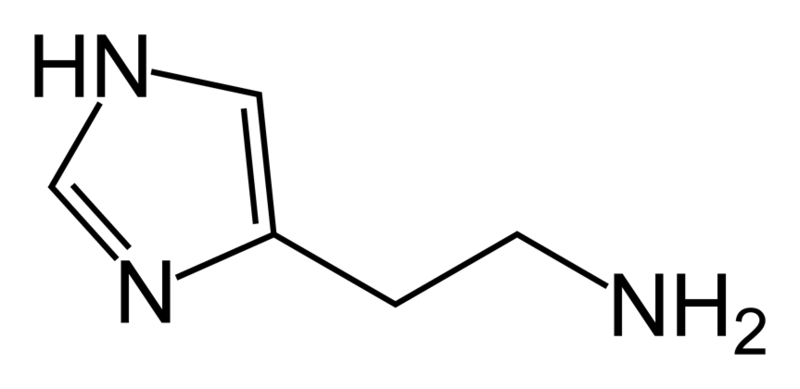Scombroid
| Scombroid | |
 | |
|---|---|
| Histamine | |
| ICD-10 | T61.1 |
| ICD-9 | 988.0 |
| DiseasesDB | 31114 |
|
WikiDoc Resources for Scombroid |
|
Articles |
|---|
|
Most recent articles on Scombroid |
|
Media |
|
Evidence Based Medicine |
|
Clinical Trials |
|
Ongoing Trials on Scombroid at Clinical Trials.gov Clinical Trials on Scombroid at Google
|
|
Guidelines / Policies / Govt |
|
US National Guidelines Clearinghouse on Scombroid
|
|
Books |
|
News |
|
Commentary |
|
Definitions |
|
Patient Resources / Community |
|
Patient resources on Scombroid Discussion groups on Scombroid Directions to Hospitals Treating Scombroid Risk calculators and risk factors for Scombroid
|
|
Healthcare Provider Resources |
|
Causes & Risk Factors for Scombroid |
|
Continuing Medical Education (CME) |
|
International |
|
|
|
Business |
|
Experimental / Informatics |
Editor-In-Chief: C. Michael Gibson, M.S., M.D. [1]
Overview
Scombroid is a foodborne illness poisoning associated with eating seafood that has been stored improperly. It is the second most common type of seafood poisoning, second only to ciguatera. However it is often missed because it resembles an allergic reaction.
Causes
Unlike many types of food poisonings, this form is not produced by an organism or virus. Histidine exists naturally on many types of fish, and at temperatures above 60 degrees Fahrenheit it converts to the biogenic amine histamine (this is one reason why fish should be stored at low temperatures). Histamine is not destroyed by normal cooking temperatures, so even properly cooked fish can be affected. Histamine is a mediator of allergic reactions, so the symptoms produced are those one would expect to see in severe allergic responses.
Symptoms
Symptoms consist of skin flushing, throbbing headache, oral burning, abdominal cramps, nausea, diarrhea, palpitations, a sense of unease, and, rarely prostration or loss of vision. Symptoms usually occur within 10-30 minutes of ingesting the fish and generally are self-limited. Physical signs may include a diffuse blanching erythema, tachycardia, wheezing, and hypotension or hypertension. People with asthma are more vulnerable to respiratory problems such as wheezing or bronchospasms.
Treatment
Treatment is in the form of supportive care such as fluids and oxygen. H1 and H2 receptor (histamine receptors) blocking medications can also be given with some success.
Related Chapters
Template:Poisoning and toxicity